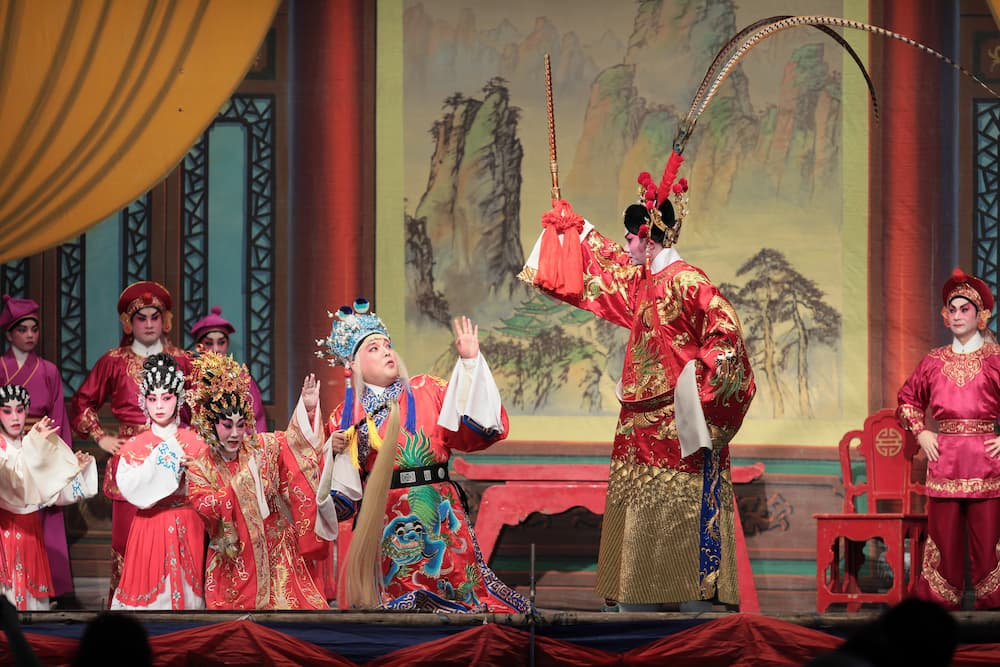
Three Lanes and Seven Alleys in Fuzhou
Splendid
Chi Culture
Topic
Three Lanes and Seven Alleys in Fuzhou
Fuzhou, known as the “Zou and Lu by the sea” (Zou and Lu refer to the natal states of Mencius and Confucius, respectively), has a history stretching back over 2,300 years. Although Sanfang Qixiang, or Three Lanes and Seven Alleys, covers an area of only 661 mu (108.9 acres, or 440,700 square meters), it is regarded as the bright pearl of Fuzhou and is greatly admired. Sanfang Qixiang is bounded by South Street (817 North Road) on the east side, surrounded by the Antai River on the south and west sides, and joins Yangqiao Road in the north. It is a square-shaped area with Hou Street (modern Nanhou Street) running through it as the main north-south axis. The Three Lanes (Yijin, Wenru, and Guanglu) are situated on the west side, and the Seven Alleys (Yangqiao, Langguan, Ta, Huang, Anmin, Gong, and Jibi) are on the east.
Wuzhu (r. ca. 206 BCE), the king of Minyue kingdom (334–111 BCE), built his capital Yecheng (in modern Fuzhou area) on the south side of Pingshan (Ping Mountain) early in the Han dynasty (206 BCE–220 CE). As Fuzhou became more prosperous, subsequent construction gave Fuzhou a dignified appearance. In the Han dynasty, the moat was expanded and moved southward; during the Western Jin (265–316) and Tang (618–907) dynasties, the capital was expanded; the end of the Tang and Five Dynasties (907–960) period oversaw construction of the inner city wall and the north-south expansion of the inner city; the outer city wall was built in the Song dynasty (960–1279), and the prefectural city was rebuilt in the early Ming dynasty (ca. mid-fourteenth century). The area took its shape in the late Tang, grew steadily in the Ming (1368–1644), and reached its heyday in the late Qing (ca. late nineteenth century). Most of the traditional-style buildings in the Sanfang Qixiang area were constructed during the Ming and Qing (1644–1911) dynasties.
Many renowned people were born in Sanfang Qixiang, (where the place was repeatedly tempered by history for) over the course of a thousand years; in fact, historical accounts include the biographies of 280 talented people who were born here. A special spirit accumulated and coalesced in numerous exceptional figures who went through severe trials. This spirit, with its unique personality, permeated the spirit of the Chinese people. This simply is a case to which the following saying applies: “The heroic spirit is strong, the love between a man and woman is enduring. Typical of these prodigies are Minister and General Zhang Jing (1492–1555), Provincial Military Commander Gan Guobao (a.k.a. Gang Guok Bow, 1709–1776), Grand Minister Lin Zexu (1785–1850) (known for launching a suppression campaign against the trading of opium), Governor-General Shen Baozhen (1820–1879), scholar and translator Yan Fu (1854–1921), revolutionary martyr Lin Juemin (1887–1911), and one of the most prolific writers in modern China, Bing Xin (1900–1999). All of these historical figures could be said to possess the “spirit of Fuzhou.”
Every lane and alley in the Sanfang Qixiang district has its own history and story to tell. Each ancient building tells something about the inner life of its owner; his or her life experience and taste are revealed in the layout, the component parts, and even in the materials used to construct the house and the courtyard. An observant visitor could make mental connections between the former residence of an eminent person, the charming local-style dwellings, ancestral temples and halls, and modern revolutionary memorial halls and appreciate that the comment “the Sanfang Qixiang district is a half-volume of modern history” is not unfounded. Ancient buildings are everywhere, as are numerous revolutionary memorial halls, over a period beginning in the Five Dynasties and extending to the Republican era (1912–1949).
One can truly appreciate that Sanfang Qixiang is unique in all of China and worthy of the descriptors: “a living fossil of a town,” “treasure-house of ancient architecture south of the Yangtze River,” and “museum of Ming and Qing architecture.” In addition, the assorted fine foods of numerous variety in Fuzhou are a real feast for the mouth. The fine foods, which are associated with rich historical stories and distinctive Fuzhou folk customs, provide one with a pleasant lingering aftertaste. The ancient buildings, old trees, unique foods, jasmine tea, and ornamental crafts are truly a feast for one’s heart, eyes, and mouth.







